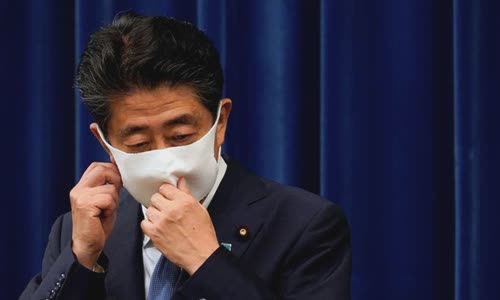The ruling Liberal Democratic Party has a decisive voice in choosing Abe to replace Prime Minister, in which the behind-the-scenes movement will have a significant influence.
Japanese Prime Minister Shinzo Abe on August 28 announced his resignation on the grounds that his health was poor and did not want illnesses affecting important decisions.

Japanese Prime Minister Shinzo Abe before entering a press conference announcing his resignation in Tokyo on August 28 Photo: Reuters.
Prime Minister Abe, Japan's longest serving head, resigned in September 2007, after a year in power due to chronic ulcerative colitis.
Abe left the prime minister position without a clear successor and in the midst of a crisis in Japan as the economy was hit hard by the Covid-19 pandemic.
Those hugs of hope to replace him made the first moves, in which two candidates announced their intention to become successors before Abe even made the official announcement of his resignation.
The path to Japan's prime minister was mainly through the ruling Liberal Democratic Party (LDP).
Those wishing to become prime minister need to first win the chair of the LDP.
But since Prime Minister Abe resigns in the middle of his term, the LDP must have a different, faster option.
LDP Secretary General Toshihiro Nikai said yesterday that no decision has been made regarding the selection of the new party chairman.
Analysts said that LDP is more likely to choose the emergency voting option.
Secretary-General Nikai may prefer the emergency approach because he wants more power in the process of choosing the new LDP president, said Jiro Yamaguchi, professor of politics at Hosei University, Japan.
In the event that a regular vote is held, the candidate must win a majority of the vote to win.
In 2012, Prime Minister Abe won such a race against independent candidate Shigeru Ishiba.
When the party voting ends, the parliament will vote for the prime minister.
For now, the numerical advantage helps the LDP ensure that the current party chairman becomes prime minister.
The question is how long the new prime minister's term will last.
Under the ruling party rules, the new LDP chairman is eligible to assume the remainder of Prime Minister Abe's term, then continues to seek re-election opportunities up to three times, opening up opportunities.
But with rapid upheaval both at home and abroad, Japan's new prime minister is sure to face a lot of challenges in wanting to stay in power, said Daniel Sneider, an expert in Japanese politics at Stanford University.



 Jeff Gray
Jeff Gray







